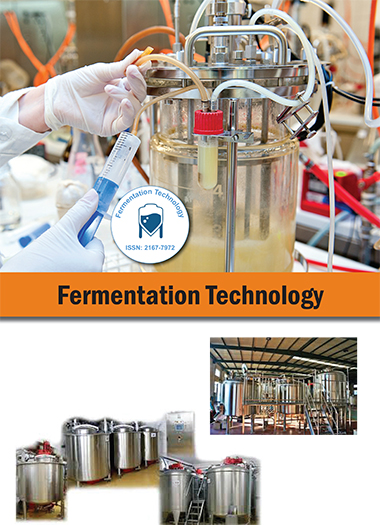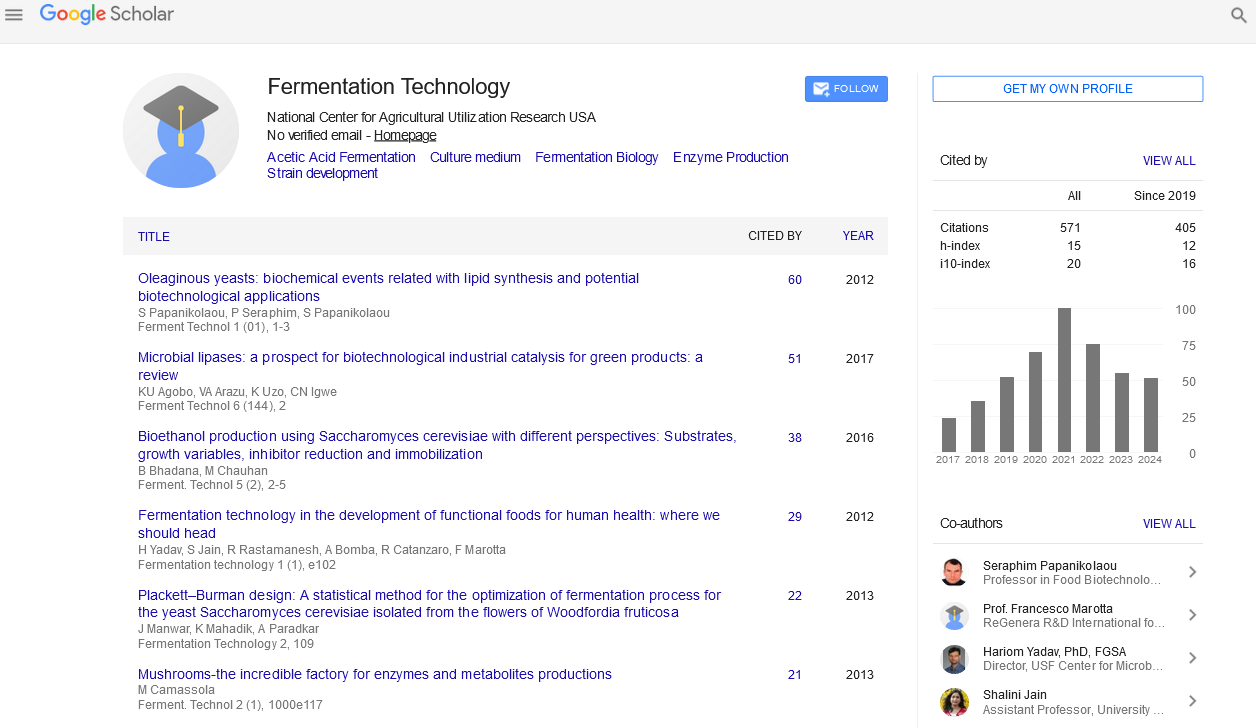Indexed In
- Open J Gate
- Genamics JournalSeek
- Access to Global Online Research in Agriculture (AGORA)
- RefSeek
- Hamdard University
- EBSCO A-Z
- OCLC- WorldCat
- Publons
Useful Links
Share This Page
Journal Flyer

Open Access Journals
- Agri and Aquaculture
- Biochemistry
- Bioinformatics & Systems Biology
- Business & Management
- Chemistry
- Clinical Sciences
- Engineering
- Food & Nutrition
- General Science
- Genetics & Molecular Biology
- Immunology & Microbiology
- Medical Sciences
- Neuroscience & Psychology
- Nursing & Health Care
- Pharmaceutical Sciences
Biofilm formation and genomic variability by ERIC-PCR of Bacillus thuringiensis strains
World Congress on Beneficial Microbes: Food, Pharma, Aqua & Beverages Industry
August 25-27, 2015 Valencia, Spain
Garcia-Gutierrez Karina, Gutierrez Dafne, Torres-Duran Patricia V, Ibarra Jorge E, Bravo Alejandra and Gomez de Leon Patricia
Universidad Nacional Autonoma de Mexico, Mexico
CINVESTAV, Mexico
Posters-Accepted Abstracts: Ferment Technol
Abstract:
Bacillus thuringiensis (Bt) is of important agronomical research interest because of its beneficial use as biological pesticide. There are some limitations regarding the sub species classification. Studies at phenotypic and genotypic levels are important to ascertain its variability. The aim of this study was to evaluate the variability by ERIC-PCR and by biofilms formation among strains from Mexico. The genomic relationships between forty environmental strains from the collections of the CINVESTAVIrapuato and IBT-UNAM were evaluated by ERIC-PCR and the biofilm-forming ability by a 96-well microplate-based assay at 72 and 96 hours of incubation. Thirty-nine different fingerprinting patterns based on 24 polymorphic fragments (139 to 2468 bp) were generated and used to construct a dendrogram. Almost all strains (95%) formed biofilms after 96 hours of incubation whose OD at 620 data were stratified into 4 categories as follows: 32.5% of them were strong (OD at 620>1.03), 35% were moderate (OD at 620 1.03-0.52), 27.5% were weak (OD at 620 0.51-0.27) and 5% were null (OD at 620�?¢�?�?�?¤0.26). The subset of strains from the CINVESTAV collection showed more heterogeneous biofilm-forming ability. A large intra-species genomic variability was observed among Bt isolates. At 96 hours of incubation, most strains from the CINVESTAV collection showed moderate to strong biofilm forming ability whereas those from IBT-UNAM collection were mainly weak biofilm producers. Results showed a large intra-species genomic variability in Bt. However, some strains could be correlated as they were found within clusters depending on the location of isolation.
Biography :
Gomez de Leon Patricia is currently working as researcher in Universidad Nacional Autonoma de Mexico, Mexico.

